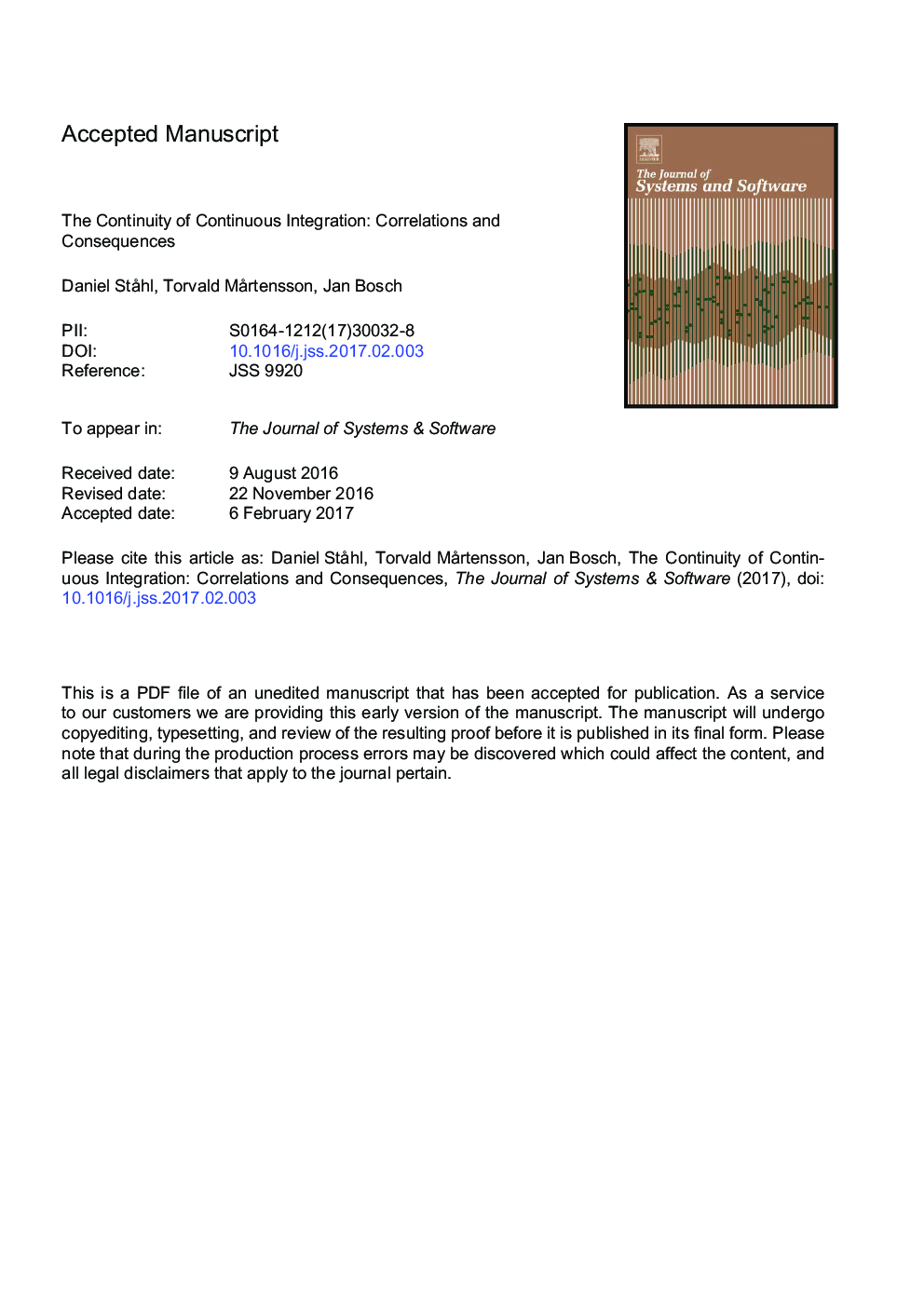| Article ID | Journal | Published Year | Pages | File Type |
|---|---|---|---|---|
| 4956457 | Journal of Systems and Software | 2017 | 29 Pages |
Abstract
The practice of continuous integration has firmly established itself in the mainstream of the software engineering industry, yet many questions surrounding it remain unanswered. Prominent among these is the issue of scalability: continuous integration has been reported to be possible to scale, but with difficulties. Understanding of the underlying mechanisms causing these difficulties is shallow, however: what is it about size that is problematic, which kind of size, and what aspect of continuous integration does it impede? Based on quantitative data from six industry cases encompassing close to 2000 engineers, complemented by interviews with engineers from five companies, this paper investigates the correlation between the continuity of continuous integration and size. It is found that not only is there indeed a correlation between the size and composition of a development organization and its tendency to integrate continuously; there is evidence that the size of the organization influences ways of working, which in turn correlate with the degree of continuity, raising the question of software manufacturability. It is further observed that developer behavior in ostensibly continuously integrating cases does not necessarily match expectations, and that frequent integration of the product itself does not automatically imply that each individual developer commits frequently.
Keywords
Related Topics
Physical Sciences and Engineering
Computer Science
Computer Networks and Communications
Authors
Daniel Ståhl, Torvald Mårtensson, Jan Bosch,
